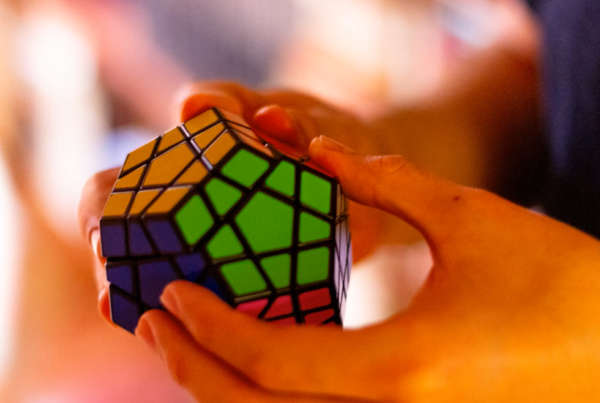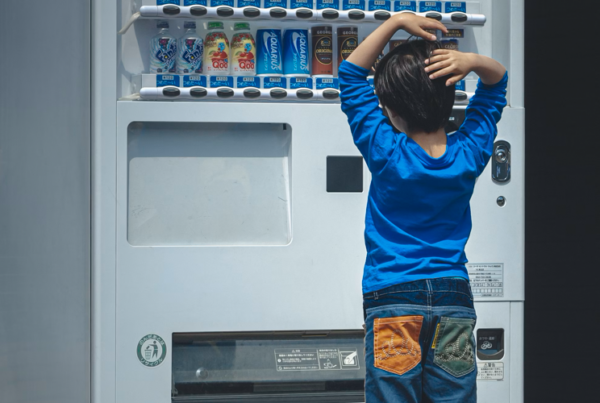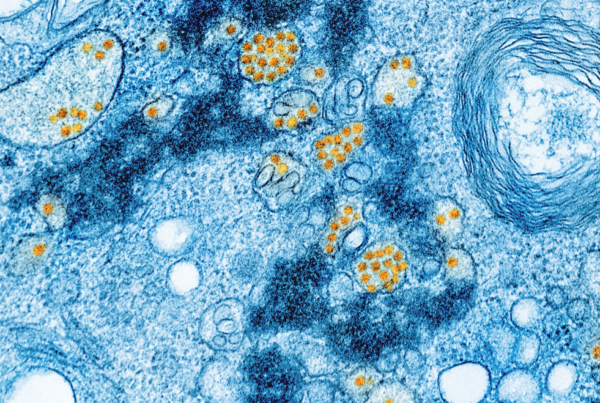
“When we are in love with someone to the point that our worlds have been turned upside down and inside out, to the point that we have difficulty even recognizing ourselves, we may not be capable of thinking, writing, or seeing clearly at all.”
Simon Baker describes a feeling which might be familiar to us. Although love is often seen as a harmonious feeling, falling in love can be quite disruptive. To better understand this emotional rollercoaster we will take a look at the underlying neurobiological processes of the onset of love.
“When we are in love with someone to the point that our worlds have been turned upside down and inside out, to the point that we have difficulty even recognizing ourselves, we may not be capable of thinking, writing, or seeing clearly at all.”
Simon Baker describes a feeling which might be familiar to us. Although love is often seen as a harmonious feeling, falling in love can be quite disruptive. To better understand this emotional rollercoaster we will take a look at the underlying neurobiological processes of the onset of love.

Illustration by Anushka Sabhanam

Illustration by Anushka Sabhanam
Falling in love is often portrayed as the most beautiful feeling in the world. You are with the person you always wanted to be with, you cannot stop smiling, and you live in full harmony. The exhibition “Love Songs” of the Musée de la Photographie in Paris, however, gives the visitor a reality check. Intimate moments of different stages of love capture not only the euphoric but also devastating aspects of our closest relationships, reminding us that love is not always harmonious. People who are madly in love might lose themselves in thoughts about the other person, being unable to focus on anything else. They are willing to sacrifice their personal happiness just to be with that person. This feels rational to the person falling in love as life appears meaningless without the other one. Of course, love does not always express itself in such extreme ways but examples in art and literature give rise to the question: Why do some people feel this way? To better understand the hopeless romantics we are taking a closer look at the neurobiology of the early stages of intense love. What is going on in people’s brains that make them surrender to the disruptiveness of love?
Sweaty palms, weak knees, dizziness, and a pounding heart often accompany the feeling of having butterflies in your stomach. When falling in love, these symptoms are a result of higher activity of the hypothalamic–pituitary–adrenal axis (HPA) which is responsible for producing the stress related hormone cortisol (Marazziti & Canale, 2004). People who fall intensely in love therefore experience stress 24/7. This increase in cortisol will eventually develop stronger attachments and increase bonds but initially, it may make the lover feel sick. Higher amounts of cortisol are also linked to inhibition of serotonin, a neurotransmitter that elevates and stabilizes mood. Consequently, lower levels of serotonin intensify the heightened stress response of love, turning insecurity into anxiety and infatuation into obsession (de Boer et al., 2012). We see a familiar pattern in people suffering from anxiety disorder, depression but also obsessive-compulsive disorder which are all characterized by decreased serotonin levels. Overthinking (obsession) which then results in unease is only resolved by acting upon the situation (compulsion) by, in the example of infatuation, texting a crush.
“lower levels of serotonin intensify the heightened stress response of love, turning insecurity into anxiety and infatuation into obsession”
But why does this obsession arise? One possible explanation could be higher activation of the reward circuit. When people fall for someone their brain’s reward system is comparable to that of a drug addict. Thoughts and actions reinforce behavior related to the desired object, consequently leading to conditioning to that object. (Fisher et al., 2010). Intense amounts of dopamine are produced, making people crave their “drug” which stills all their needs and which they most desire: the love of that very special someone (Fisher et al., 2016). This could be the reason why thinking about one’s latest object of infatuation seems so much more important than a chapter on psychological methods because spending time with the desired person or simply thinking about them leads to instant gratification – even if these thoughts and behaviors are unwanted. Love becomes intrusive and certainly does not care about the upcoming statistics exam. This can have dramatic consequences. Life without this drug becomes unbearable and all that is seemingly needed to survive is another sip from the potion of love: a passionate gaze, a simple touch, another kiss.
The mind is running free and reckless behaviors which seem stupid and embarrassing to others become normality. When falling in love people might not think critically anymore and lack theory of mind, the ability to understand the mental states of others and oneself. People maybe do not even recognize themselves why they act the way they act. This could be due to less activation of their prefrontal regions (de Boer et al., 2012). The prefrontal regions represent the control system for human behavior and thoughts, including decision making, planning, and executive functions such as emotion regulation and attention. People who fell in love show less activation in these prefrontal regions. So, spending an insane amount of money on jewelry, writing cringey poems, and ignoring obvious flaws of one’s significant other may make total sense to people who are very much in love.
“When falling in love people might not think critically anymore and lack theory of mind, the ability to understand the mental states of others and oneself.”
All the mentioned processes are influenced by oxytocin. The “love-hormone” intensifies and inhibits certain brain activations which leads to short-term chaos but long-term harmony. Especially after overcoming the initial infatuation of love, oxytocin evens out the negative side effects of love by regulating the HPA axis and balancing serotonin production out, leading to more calmness and security in long term relationships. Our reward system is still triggered, but less intensely, leading to more harmony and less disruption in our romantic life (Wu, 2017). It was even found that people in long term relationships show less depressive symptoms and are overall more mentally stable (Merline et al., 2004).
There are a lot of symptoms which explain why falling in love is not always a peaceful experience for everyone. But it does not have to be that way. Everyone experiences love differently and sometimes the mentioned neurobiological processes manifest themselves more and sometimes less. The photographer Nan Goldin might be tortured by the sensation of being in love leading her to express these unbearable feelings in her artwork whereas you might be quite content and happy when finally going out with that person you had a crush on for weeks. Nonetheless, the beginning of love can be quite stressful whereas the long term effects of romantic relationships are rather harmonious, showing us that even if falling in love sometimes seems like a battle it is ultimately followed by peace.
If this topic made you intrigued and you plan to go to Paris, pay a visit to “Love Songs” at the Musée de la Photographie, which goes on until the 21st of August 2022. For the ones who cannot wait, the playlist to the exhibition is available on Spotify. <<
References
– De Boer, A., van Buel, E. M., & Ter Horst, G. J. (2012). Love is more than just a kiss: A neurobiological perspective on love and affection. Neuroscience, 201, 114-124.
– Edwards, S. (2015, Spring). Love and the brain (Blog post). Retrieved from https://hms.harvard.edu/news-events/publications-archive/brain/love-brain
– Fisher, H. E., Brown, L. L., Aron, A., Strong, G., & Mashek, D. (2010). Reward, addiction, and emotion regulation systems associated with rejection in love. Journal of Neurophysiology, 104(1), 51-60.
– Fisher, H. E., Brown, L. L., Aron, A., Strong, G., & Mashek, D. (2010). Reward, addiction, and emotion regulation systems associated with rejection in love. Journal of Neurophysiology, 104(1), 51-60.
– Fisher, H. E., Xu, X., Aron, A., & Brown, L. L. (2016). Intense, passionate, romantic love: A natural addiction? How the fields that investigate romance and substance abuse can inform each other. Frontiers in Psychology, 7, 687.
– Hatfield, E., & Sprecher, S. (1986). Measuring passionate love in intimate relationships. Journal of Adolescence, 9(4), 383-410.
– Marazziti, D., & Canale, D. (2004). Hormonal changes when falling in love. Psychoneuroendocrinology, 29(7), 931-936.
– Merline, A. C., O’Malley, P. M., Schulenberg, J. E., Bachman, J. G., & Johnston, L. D. (2004). Substance use among adults 35 years of age: Prevalence, adulthood predictors, and impact of adolescent substance use. American Journal of Public Health, 94(1), 96-102.
– Wu, C. (2017, February). Love actually (Blog post). Retrieved from https://sitn.hms.harvard.edu/flash/2017/love-actually-science-behind-lust-attraction-companionship/
Falling in love is often portrayed as the most beautiful feeling in the world. You are with the person you always wanted to be with, you cannot stop smiling, and you live in full harmony. The exhibition “Love Songs” of the Musée de la Photographie in Paris, however, gives the visitor a reality check. Intimate moments of different stages of love capture not only the euphoric but also devastating aspects of our closest relationships, reminding us that love is not always harmonious. People who are madly in love might lose themselves in thoughts about the other person, being unable to focus on anything else. They are willing to sacrifice their personal happiness just to be with that person. This feels rational to the person falling in love as life appears meaningless without the other one. Of course, love does not always express itself in such extreme ways but examples in art and literature give rise to the question: Why do some people feel this way? To better understand the hopeless romantics we are taking a closer look at the neurobiology of the early stages of intense love. What is going on in people’s brains that make them surrender to the disruptiveness of love?
Sweaty palms, weak knees, dizziness, and a pounding heart often accompany the feeling of having butterflies in your stomach. When falling in love, these symptoms are a result of higher activity of the hypothalamic–pituitary–adrenal axis (HPA) which is responsible for producing the stress related hormone cortisol (Marazziti & Canale, 2004). People who fall intensely in love therefore experience stress 24/7. This increase in cortisol will eventually develop stronger attachments and increase bonds but initially, it may make the lover feel sick. Higher amounts of cortisol are also linked to inhibition of serotonin, a neurotransmitter that elevates and stabilizes mood. Consequently, lower levels of serotonin intensify the heightened stress response of love, turning insecurity into anxiety and infatuation into obsession (de Boer et al., 2012). We see a familiar pattern in people suffering from anxiety disorder, depression but also obsessive-compulsive disorder which are all characterized by decreased serotonin levels. Overthinking (obsession) which then results in unease is only resolved by acting upon the situation (compulsion) by, in the example of infatuation, texting a crush.
“lower levels of serotonin intensify the heightened stress response of love, turning insecurity into anxiety and infatuation into obsession”
But why does this obsession arise? One possible explanation could be higher activation of the reward circuit. When people fall for someone their brain’s reward system is comparable to that of a drug addict. Thoughts and actions reinforce behavior related to the desired object, consequently leading to conditioning to that object. (Fisher et al., 2010). Intense amounts of dopamine are produced, making people crave their “drug” which stills all their needs and which they most desire: the love of that very special someone (Fisher et al., 2016). This could be the reason why thinking about one’s latest object of infatuation seems so much more important than a chapter on psychological methods because spending time with the desired person or simply thinking about them leads to instant gratification – even if these thoughts and behaviors are unwanted. Love becomes intrusive and certainly does not care about the upcoming statistics exam. This can have dramatic consequences. Life without this drug becomes unbearable and all that is seemingly needed to survive is another sip from the potion of love: a passionate gaze, a simple touch, another kiss.
The mind is running free and reckless behaviors which seem stupid and embarrassing to others become normality. When falling in love people might not think critically anymore and lack theory of mind, the ability to understand the mental states of others and oneself. People maybe do not even recognize themselves why they act the way they act. This could be due to less activation of their prefrontal regions (de Boer et al., 2012). The prefrontal regions represent the control system for human behavior and thoughts, including decision making, planning, and executive functions such as emotion regulation and attention. People who fell in love show less activation in these prefrontal regions. So, spending an insane amount of money on jewelry, writing cringey poems, and ignoring obvious flaws of one’s significant other may make total sense to people who are very much in love.
“When falling in love people might not think critically anymore and lack theory of mind, the ability to understand the mental states of others and oneself.”
All the mentioned processes are influenced by oxytocin. The “love-hormone” intensifies and inhibits certain brain activations which leads to short-term chaos but long-term harmony. Especially after overcoming the initial infatuation of love, oxytocin evens out the negative side effects of love by regulating the HPA axis and balancing serotonin production out, leading to more calmness and security in long term relationships. Our reward system is still triggered, but less intensely, leading to more harmony and less disruption in our romantic life (Wu, 2017). It was even found that people in long term relationships show less depressive symptoms and are overall more mentally stable (Merline et al., 2004).
There are a lot of symptoms which explain why falling in love is not always a peaceful experience for everyone. But it does not have to be that way. Everyone experiences love differently and sometimes the mentioned neurobiological processes manifest themselves more and sometimes less. The photographer Nan Goldin might be tortured by the sensation of being in love leading her to express these unbearable feelings in her artwork whereas you might be quite content and happy when finally going out with that person you had a crush on for weeks. Nonetheless, the beginning of love can be quite stressful whereas the long term effects of romantic relationships are rather harmonious, showing us that even if falling in love sometimes seems like a battle it is ultimately followed by peace.
If this topic made you intrigued and you plan to go to Paris, pay a visit to “Love Songs” at the Musée de la Photographie, which goes on until the 21st of August 2022. For the ones who cannot wait, the playlist to the exhibition is available on Spotify. <<



